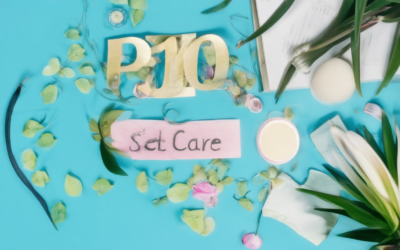Navigating life’s twists and turns can be daunting, but embracing positive change is often the catalyst for personal growth, professional success, and lasting impact. As we embark on our journey through life, we encounter numerous opportunities for transformation – whether it’s overcoming adversity, building strong relationships, or pursuing new experiences. By understanding what drives these positive changes and learning how to harness their power, we can unlock a brighter future filled with purpose, resilience, and fulfillment.

The Most Positive Change in My Life
I’ve experienced numerous transformations throughout my life, but one significant shift stands out – adopting a consistent morning routine.
- Starting my day with meditation and journaling has been instrumental in setting a positive tone.
- This daily ritual helps me clarify my thoughts, prioritize tasks, and cultivate gratitude.
- By incorporating physical activity, such as yoga or a short walk, I’ve noticed improved energy levels and reduced stress.
- A balanced breakfast, rich in nutrients, fuels my body for the challenges ahead.
- As I continue to refine my morning routine, I’m better equipped to tackle life’s obstacles with confidence and resilience.
While there have been many positive changes in my life, this morning routine has become a cornerstone of my well-being.
Key Takeaways:
- Establishing a consistent morning routine can significantly impact overall well-being.
- Meditation and journaling can help clarify thoughts, set priorities, and cultivate gratitude.
- Incorporating physical activity into your morning routine can boost energy levels and reduce stress.
- Eating a balanced breakfast is essential for fueling the body for the challenges ahead.
- Continuously refining your morning routine can lead to increased confidence and resilience.
Additional Tips:
- Experiment with different activities to find what works best for you.
- Be patient and flexible, allowing yourself time to adjust to new habits.
- Make adjustments as needed to maintain a routine that suits your evolving needs.
Transforming Your Life for the Better
I’ve been on a journey of self-discovery and growth, and I’m excited to share my experiences with you.
-
Embracing Positivity
One of the most significant changes I made was shifting my mindset towards positivity. I started practicing gratitude daily, focusing on the good things in my life, and surrounding myself with uplifting people.
Some great resources for learning more about positivity and mindfulness include:
- The Mindful Movement: A website dedicated to helping people cultivate mindfulness and live more intentionally.
- Mindful.org: A leading online resource for mindfulness and meditation practices.
-
Setting Goals and Taking Action
Another crucial step in transforming my life was setting clear goals and taking consistent action towards achieving them. I broke down large objectives into smaller, manageable tasks and created a schedule to stay on track.
For example, if you want to start exercising regularly, begin by committing to a short walk each day and gradually increase the duration and intensity over time.
-
Cultivating Resilience
Life can be unpredictable, and setbacks are inevitable. However, it’s how we respond to challenges that matters. I learned to develop resilience by practicing self-care, seeking support from loved ones, and reframing failures as opportunities for growth.
Remember, every successful person has experienced setbacks along the way. The key is to learn from them and keep moving forward.
-
Nurturing Relationships
Surrounding yourself with supportive people who uplift and encourage you is essential for personal growth. I prioritized building strong relationships with family and friends, and I made a conscious effort to nurture those connections through regular communication and quality time together.
Investing in meaningful relationships can have a profound impact on our mental and emotional well-being.
-
Pursuing Personal Growth
Finally, I committed to ongoing personal growth by reading books, attending workshops, and seeking out new experiences that challenged me and helped me grow as a person.
Some recommended resources for personal growth include:
- The Happiness Project: A book by Gretchen Rubin that offers practical advice on cultivating happiness and fulfillment.
- The 7 Habits of Highly Effective People: A classic self-help book by Stephen Covey that provides timeless wisdom on personal development.
By incorporating these habits into my daily routine, I’ve been able to transform my life in profound ways. I hope these suggestions inspire you to take control of your own journey and create a brighter future for yourself.

What Is Positive Change?
Positive change refers to making adjustments in our lives that lead to beneficial outcomes.
- The concept of positive change emphasizes the importance of taking proactive steps towards personal growth and development.
- It involves embracing new habits, behaviors, and perspectives that can enhance our overall well-being and quality of life.
Key Characteristics of Positive Change
- Voluntary: Positive change is a deliberate choice we make to improve ourselves and our circumstances.
- Intentional: We set goals and work towards achieving them through conscious effort and dedication.
- Sustainable: Positive change is long-term and requires consistent effort to maintain progress.
Benefits of Positive Change
- Improved mental health and well-being
- Increased confidence and self-esteem
- Better relationships and social connections
- Enhanced productivity and career success
Embracing Positive Change
To effectively implement positive change in our lives, we need to cultivate a growth mindset, be open to learning and feedback, and take calculated risks.
- Set realistic goals: Break down large objectives into smaller, achievable milestones.
- Create a support network: Surround yourself with people who encourage and motivate you.
- Practice self-care: Prioritize physical and emotional well-being to maintain energy and resilience.
Overcoming Obstacles to Positive Change
We may encounter setbacks and challenges along the way, but it’s essential to stay committed to our goals and adapt to changing circumstances.
- Re-evaluate priorities: Assess what’s holding us back and adjust our approach accordingly.
- Seek professional help: Consult experts or mentors for guidance and support.
- Cultivate gratitude: Focus on the positive aspects of our lives and express appreciation for what we have.
Maintaining Momentum
To sustain positive change, we need to continuously evaluate and refine our strategies, celebrate our successes, and learn from our failures.
- Track progress: Monitor our achievements and identify areas for improvement.
- Stay accountable: Share our goals and progress with trusted friends or family members.
- Foster a growth mindset: View challenges as opportunities for growth and development.

Examples of Changes in Life
I’ve experienced many significant changes in my life, and I’m sure you have too.
-
New Job Opportunities
Starting a new job can bring about numerous changes, from adjusting to a new work environment to learning new skills and meeting new colleagues.
- Changing roles or industries
- Adapting to a new company culture
- Developing new professional relationships
-
Moving to a New Home
Moving to a new home can be a life-changing experience, bringing about changes in daily routines, social connections, and overall lifestyle.
- Adjusting to a new neighborhood
- Getting familiar with local amenities
- Building a new community
-
Health and Wellness
Changes in health and wellness can significantly impact our lives, whether it’s recovering from an illness, adopting a new diet, or starting a regular exercise routine.
- Managing chronic health conditions
- Improving mental health and wellbeing
- Developing healthy habits
-
Relationships and Personal Growth
Nurturing relationships and pursuing personal growth can lead to profound changes in our lives, from building stronger connections with loved ones to developing new interests and hobbies.
- Strengthening romantic relationships
- Bonding with family members
- Pursuing personal passions and interests
-
Travel and Exploration
Exploring new places and experiencing different cultures can broaden our perspectives and bring about lasting changes in our lives.
- Visiting new countries and cities
- Immersing ourselves in local customs
- Meeting people from diverse backgrounds
-
Education and Career Development
Pursuing education and career development can lead to significant changes in our lives, from acquiring new skills to advancing in our careers.
- Enrolling in courses or certifications
- Networking with professionals
- Advancing in our careers
These are just a few examples of the many changes we may experience in life. By embracing these changes and viewing them as opportunities for growth, we can navigate life’s challenges with greater ease and confidence.
Life Transitions Explained
I’ve navigated my fair share of life transitions, and I’m here to guide you through the process.
- The Four Types of Life Transitions
-
1. Major Life Changes
Major life changes can be overwhelming, but they often bring opportunities for growth and renewal. Examples include moving to a new home, switching careers, or getting married.
-
2. Developmental Transitions
Developmental transitions occur as we progress through various stages of life, such as adolescence, young adulthood, middle age, and old age. Each stage brings its unique set of challenges and opportunities.
-
3. Situational Transitions
Situational transitions arise from external circumstances, like job loss, divorce, or health issues. These events require adaptability and resilience to navigate successfully.
-
4. Role Transitions
Role transitions involve shifts in our social roles, such as becoming a parent, caregiver, or retiree. These changes demand adjustments in our identities, responsibilities, and relationships.
At Live On Blogs, we understand the importance of navigating these life transitions with ease and confidence. Our community offers valuable resources, support, and guidance to help you thrive during these transformative periods.
For more information on managing life transitions, check out our articles on life transitions and personal growth .
Remember, every transition presents an opportunity for growth, learning, and self-discovery. By embracing these changes and seeking support when needed, you’ll emerge stronger, wiser, and more resilient.

Changes in Matter
Understanding changes in matter is crucial for grasping various scientific concepts.
- Melting:
- Freezing:
- Sublimation:
- Deposition:
- Condensation:
- Vaporization:
Melting occurs when a solid turns into a liquid due to increased temperature or pressure.
Freezing happens when a liquid transforms into a solid due to decreased temperature or pressure.
Sublimation takes place when a solid directly transitions into a gas without going through the liquid phase.
Deposition occurs when a gas transforms directly into a solid without passing through the liquid phase.
Condensation happens when a gas changes into a liquid due to decreased temperature or pressure.
Vaporization occurs when a liquid transforms into a gas due to increased temperature or pressure.
Examples of Changes in Matter
The following scenarios illustrate changes in matter:
- Ice cubes melting in a glass of water
- A pot of boiling water turning into steam
- Cooking oil changing from a liquid to a gas when heated
- Snowflakes falling from the sky and landing on the ground
- A puddle of water evaporating into the air
- A block of ice sublimating directly into water vapor
Conclusion
Changes in matter are essential processes that occur in our daily lives, influencing various aspects of science and technology.




0 Comments